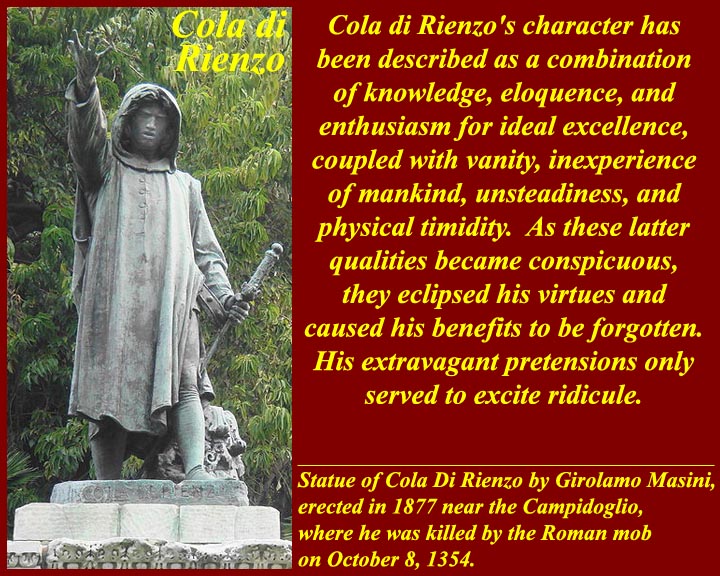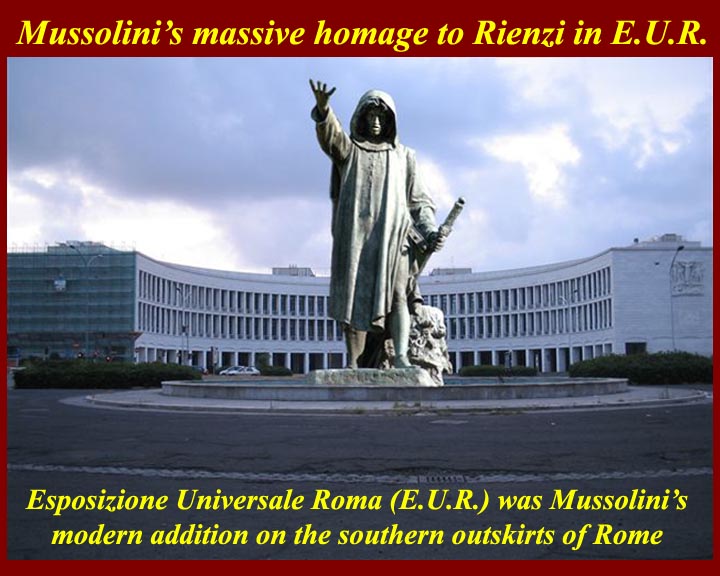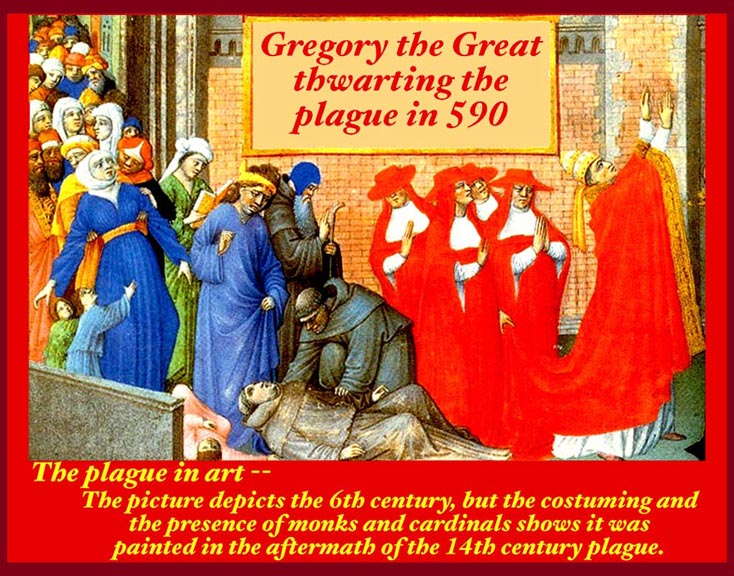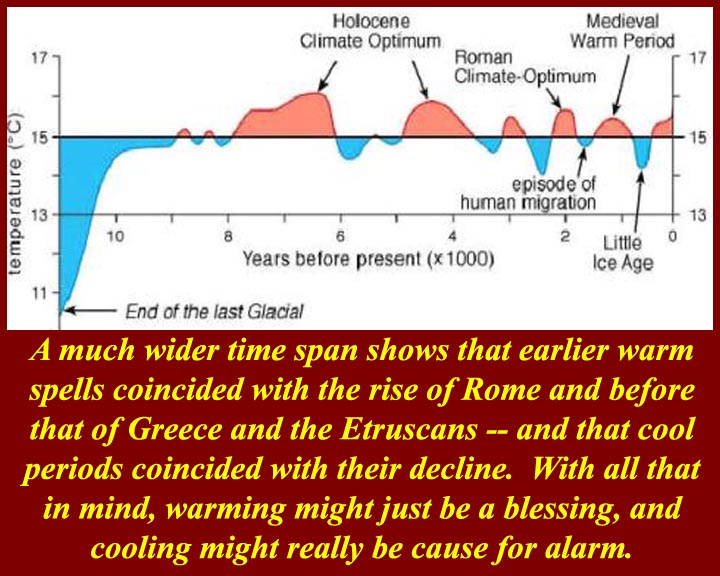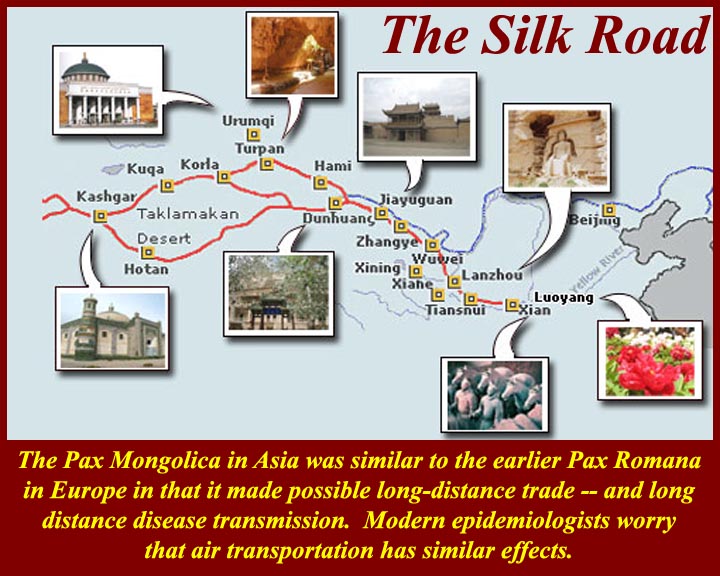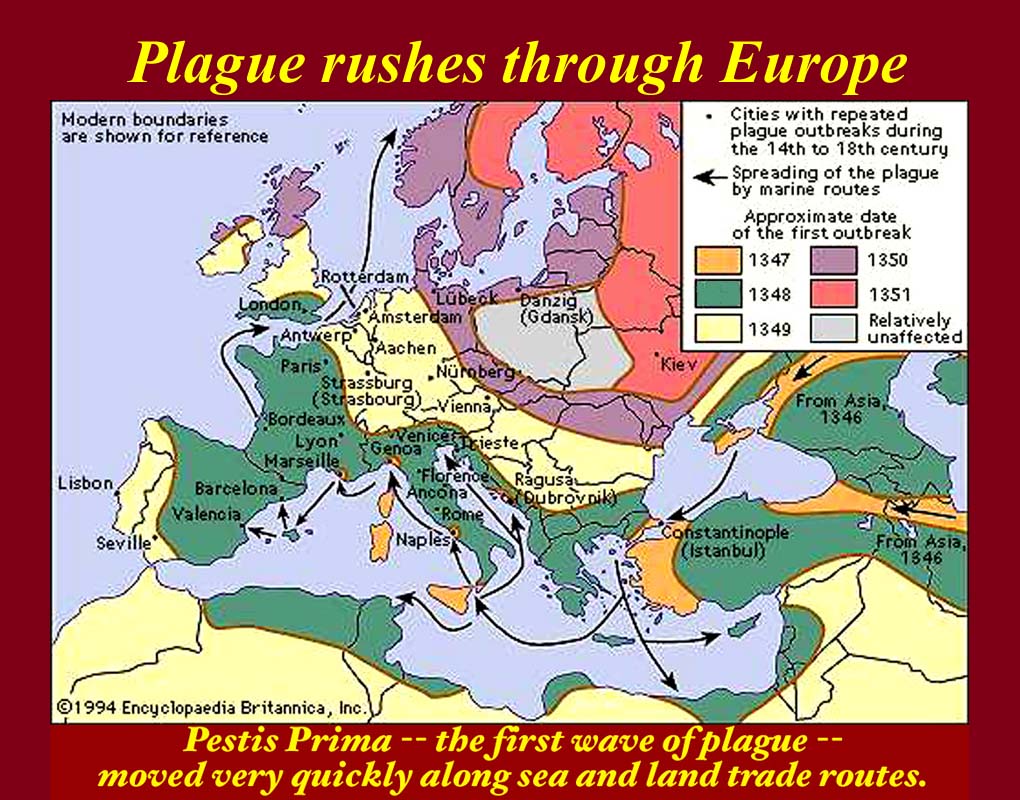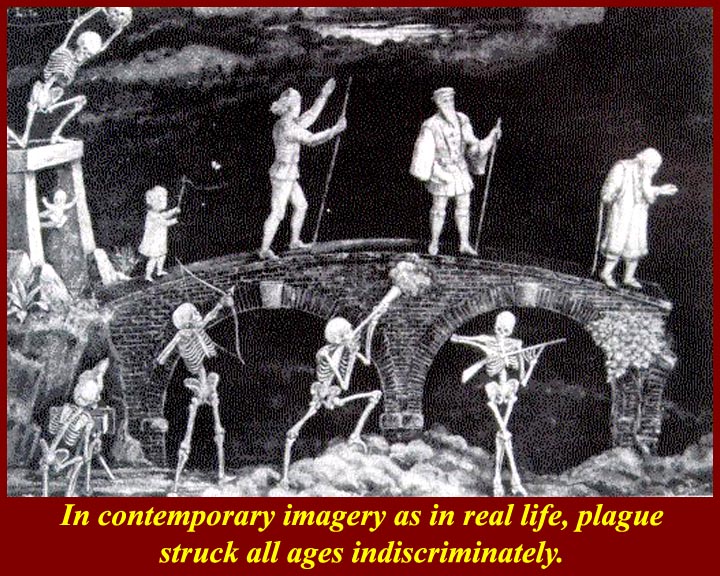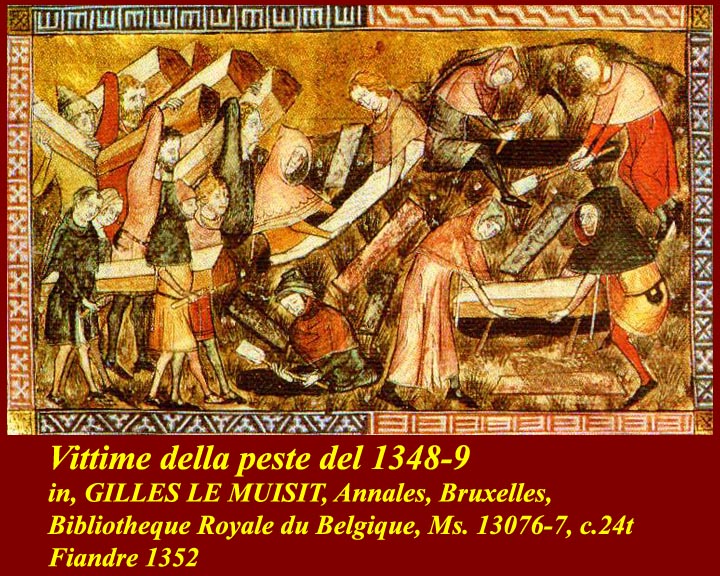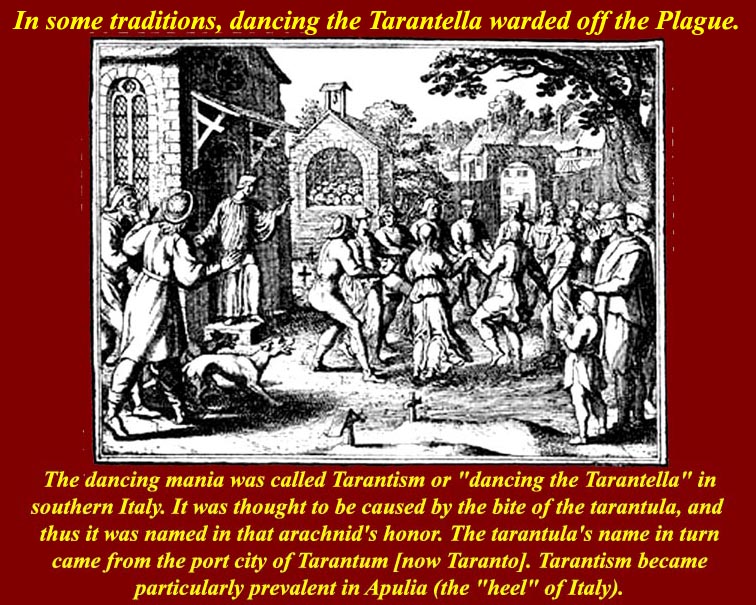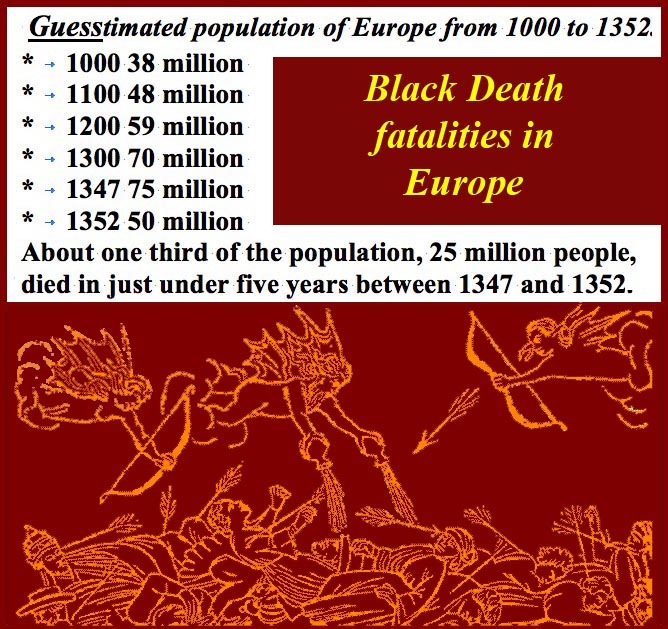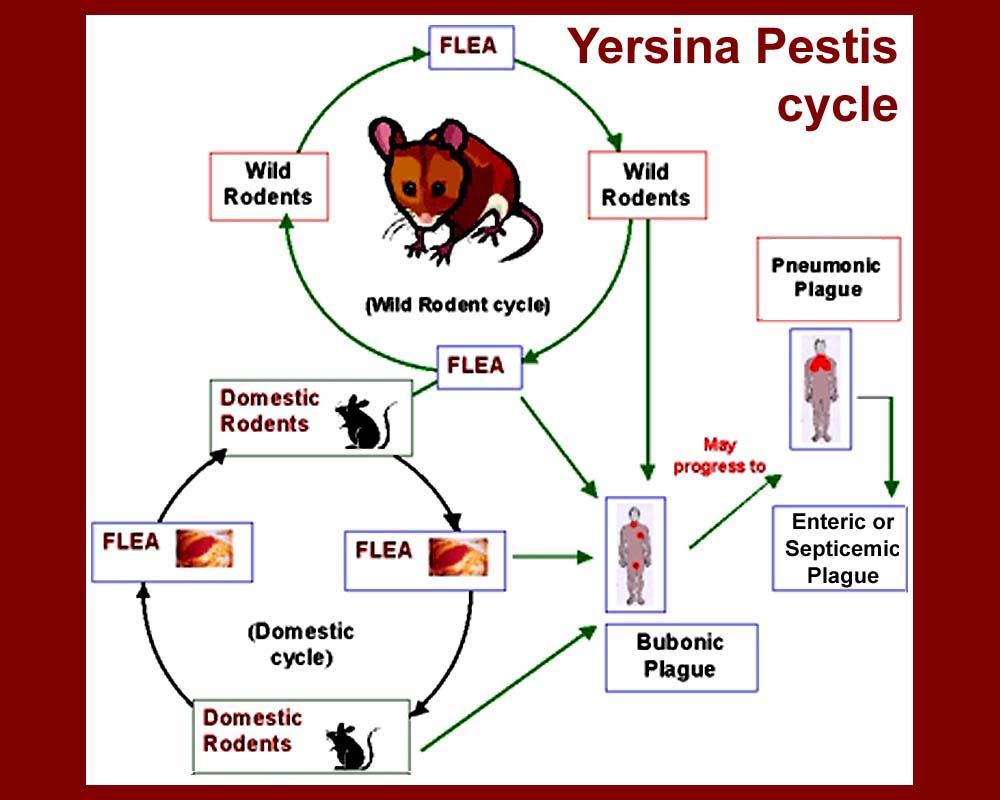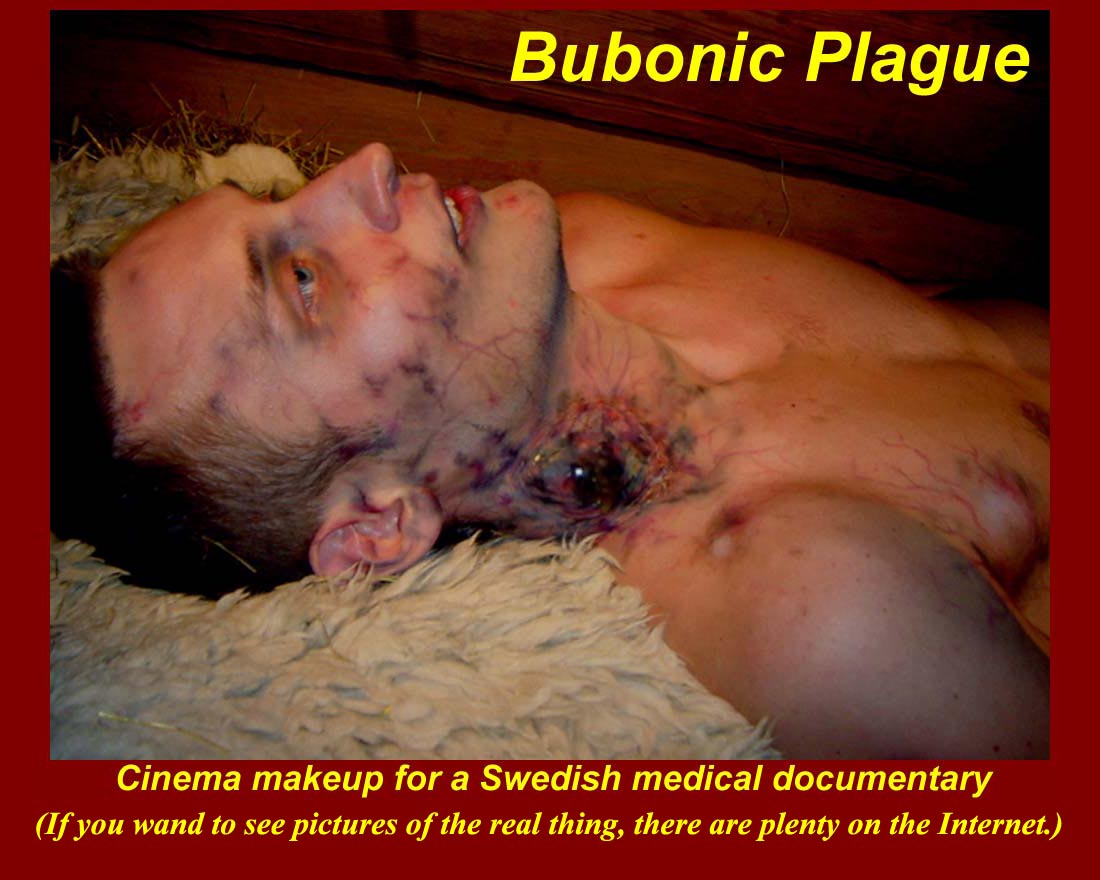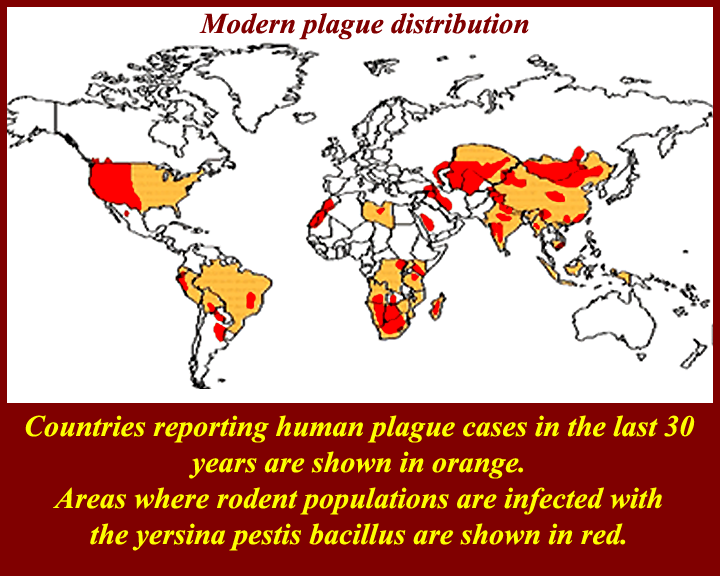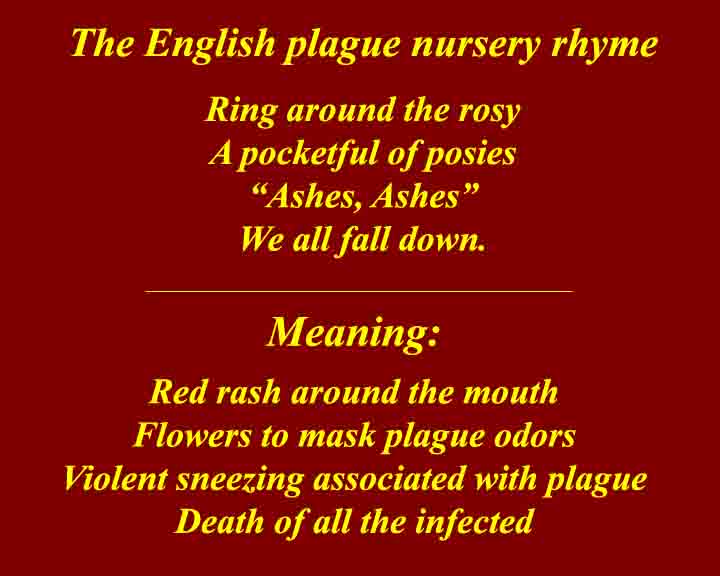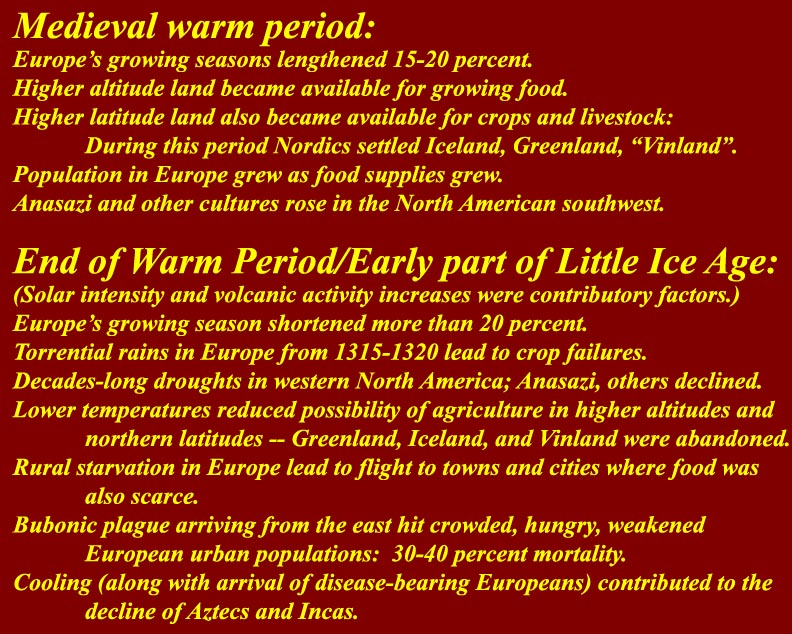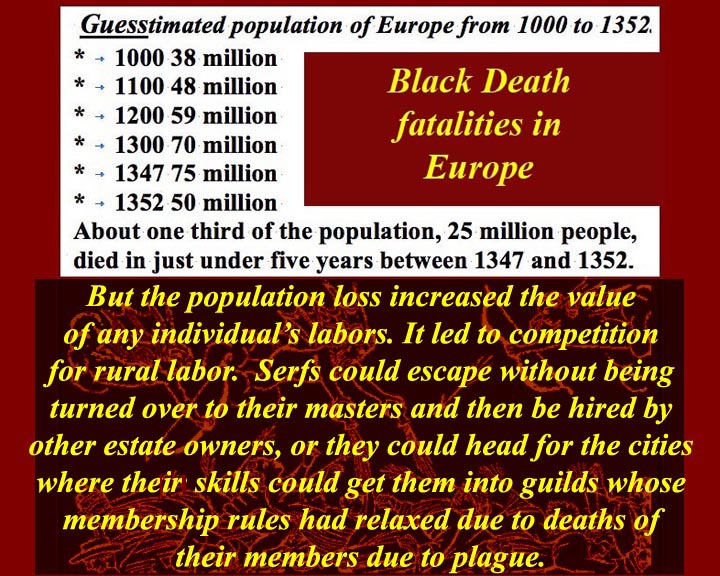End of days -- End of Medieval:
Cola di Rienzo, Plague, and Opportunities
Click on links and small images below to go to larger images for Unit 10
Cola
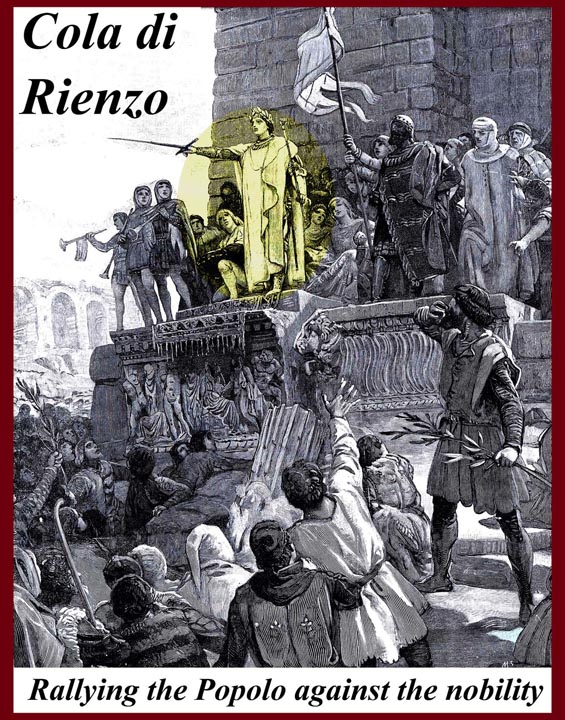
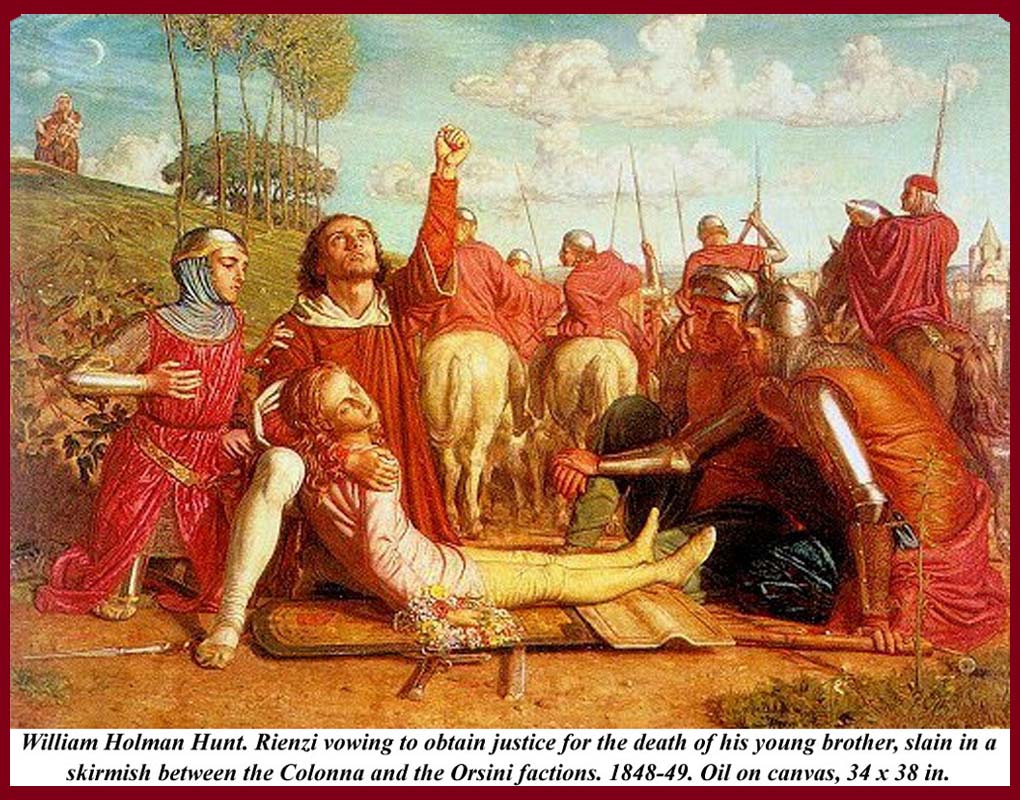
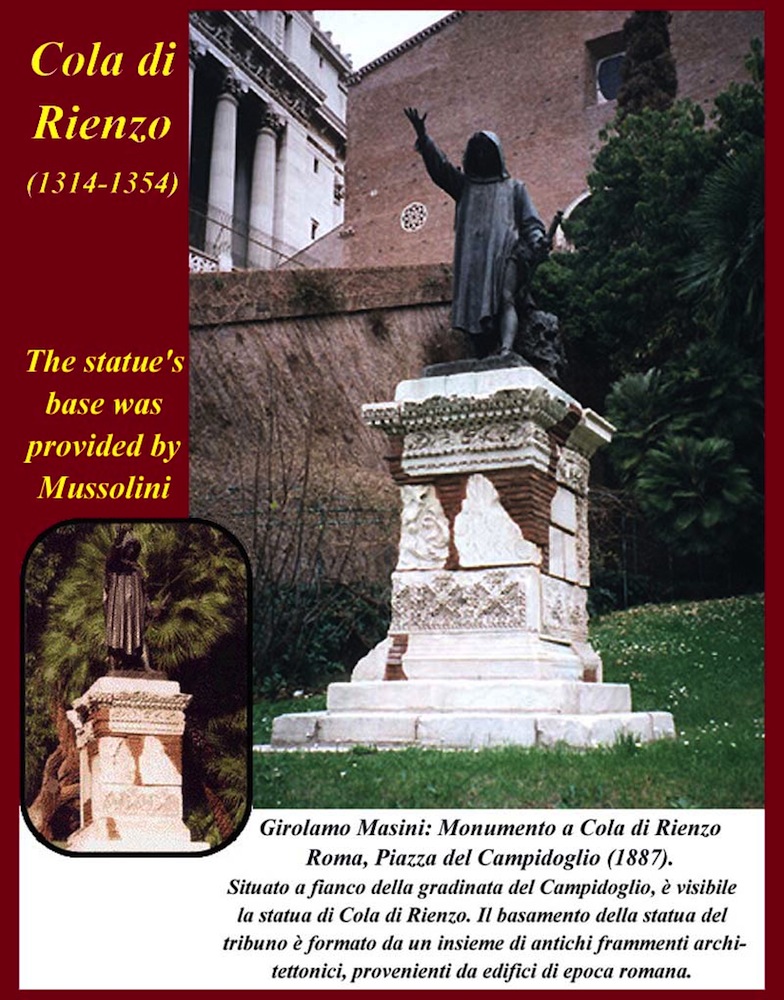
http://www.mmdtkw.org/MedRom1001ColaRally.jpg
http://www.mmdtkw.org/MedRom1002Hunt'sRienzi.jpg
http://www.mmdtkw.org/MedRom1003RienzoStatue.jpg
http://www.mmdtkw.org/MedRom1003xColaCharacter.jpg
(Quoted and paraphrased from http://en.wikipedia.org/wiki/Cola_di_Rienzo):
Cola di Rienzo (or di Rienzi) (c. 1313 – October 8, 1354) was an Italian medieval politician and popular leader, tribune of the Roman people in the mid-14th century.
Cola di Rienzo's character has been described as a combination of knowledge, eloquence, and enthusiasm for ideal excellence, coupled with vanity, inexperience of mankind, and physical timidity. As these latter qualities became conspicuous, they eclipsed his virtues and caused his benefits to be forgotten. His extravagant pretensions only served to excite ridicule.
In the beginning, Cola was a notary and somewhat of an expert on ancient Roman inscriptions. He was welcomed at functions at the noble Orsini family court where, according to some accounts, his ideas about social structure and return to ancient Roman republican ideals caused some mirth. When his younger brother was killed in the crossfire of an Orsini-Colonna skirmish in Rome he led an active insurrection against all the Roman nobility. When the nobles fled Rome, he took power, but what he didn't realize was that the nobles had only left to muster their rural followers into militias, which came back and expelled Cola. Cola wandered Europe for a while until he was imprisoned in Prague (1350) and then sent off to be a Papal prisoner in Avignon. But then a new Pope (Innocent IV) thought he would be useful in Rome and sent him there where he established a new regime. Cola's excesses (and the taxes he levied to support them) soon cost him his popularity with the public. In the end, Cola was killed by the Roman mob that he had played to.
There is little doubt that in his final sojourn in Rome he was manipulated by Petrarch and by other agents of Pope Innocent IV, who were attempting to lessen the power of Rome's feuding noble families and increase papal influence. Petrarch first met Cola in 1343 and was impressed by his enthusiasm. He embraced Cola's revolution of 1347, but then began to have doubts; Cola was naive and pretentious. Finally, Petrarch became disillusioned and was bitterly disappointed when Cola's own actions led to his fall.
The 1877 statue of Cola was erected between Michelangelo's Cordonata leading up to the Capitoline Hill and the steep monumental stairs leading up to S. Maria in Aracoeli Church. Rome had been integrated into the Italian Kingdom in 1870 by enthusiasts who conveniently forgot Cola's faults.
Also see http://www.newadvent.org/cathen/13052c.htm.



http://www.mmdtkw.org/MedRom1004aRienzoFansNapoleon.jpg
http://www.mmdtkw.org/MedRom1004bRienzoFansHitler.jpg
http://www.mmdtkw.org/MedRom1004cRienzoFansMussolini.jpg
http://www.mmdtkw.org/MedRom1004cxMussolinisColaEUR.jpg
Rienzi fan club
A man is known by the company he keeps -- or in this case by his fan club. Starting in the 18th century Cola was romanticized as a popular leader against the aristocracy. A copy of a book about Rienzi was found in Napoleon's effects after Waterloo. Hitler claimed to have been inspired by his first hearing of Wagner's opera, Rienzi. Mussolini was so enamored of Gabriele d'Annunzio's poem about Cola that d'Annunzio became the philosopher and poet laureate of Italian Fascism. Mussolini's monumental copy of the 1877 statue of Cola still stands in Mussolini's modern addition to Rome, the Esposizione Universale Roma (E.U.R.).
None of these guys seems to have read Cola's bio, either the parts about his grandiose pretensions or especially the part about how he was killed by the mob.
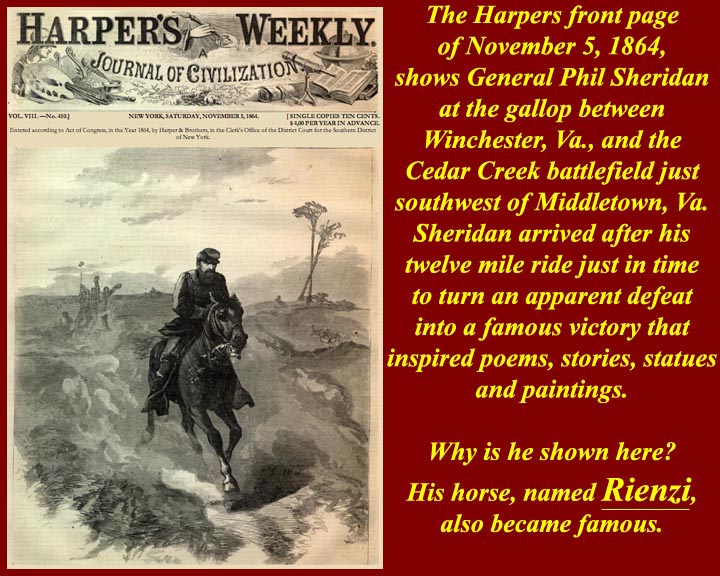
http://www.mmdtkw.org/MedRom1004dSheridanRienzi.jpg
http://www.mmdtkw.org/MedRom1004Sheridan'sRienzi.jpg
Rienzi was the war horse of Union General Phil Sheridan. If location is any indication, he is also the most honored horse in America -- occupying his own glass case in the Hall of Armed Forces History at the Smithsonian. It can be argued that without this noble steed, Lincoln would never have been reelected, and then assassinated, and THEN where would we be?
Read more at http://www.roadsideamerica.com/pet/rienzi.html.
Read Sheridan's Ride at http://www.bartleby.com/102/150.html.
Sheridan's Rienzi at the Smithsonian: https://www.smithsonianmag.com/history/union-colonel-phil-sheridans-valiant-horse-124899830/
Plague
http://www.mmdtkw.org/MedRom1005PlagueGreg.jpg
The plague that swept through Italy and the rest of Europe starting in 1347 was not Rome's first. In 589 AD, the Tiber overflowed its banks, destroying numerous buildings, among them the granaries of the Church with all the store of grain. Pestilence followed on the floods, and Rome became a very city of the dead. Business was at a standstill, and the streets were deserted save for the wagons which bore forth countless corpses for burial in common pits beyond the city walls. The plague of 589 probably was not bubonic plague -- the symptoms would have been described if it was. More likely, it was malaria, cholera, or some other disease that was associated with the flooding -- either mosquitoes or backed-up sewage.
According to legend, when Pope Elect Gregory led the "Sevenfold Procession"(processions from Rome's seven great churches of those days, joining together) in prayer for an end to the sin-caused "plague", the archangel Michael appeared on the top of Hadrian's tomb sheathing a sword, which signaled the end of the plague. Since then the tomb has been called Castel Sant'Angelo.
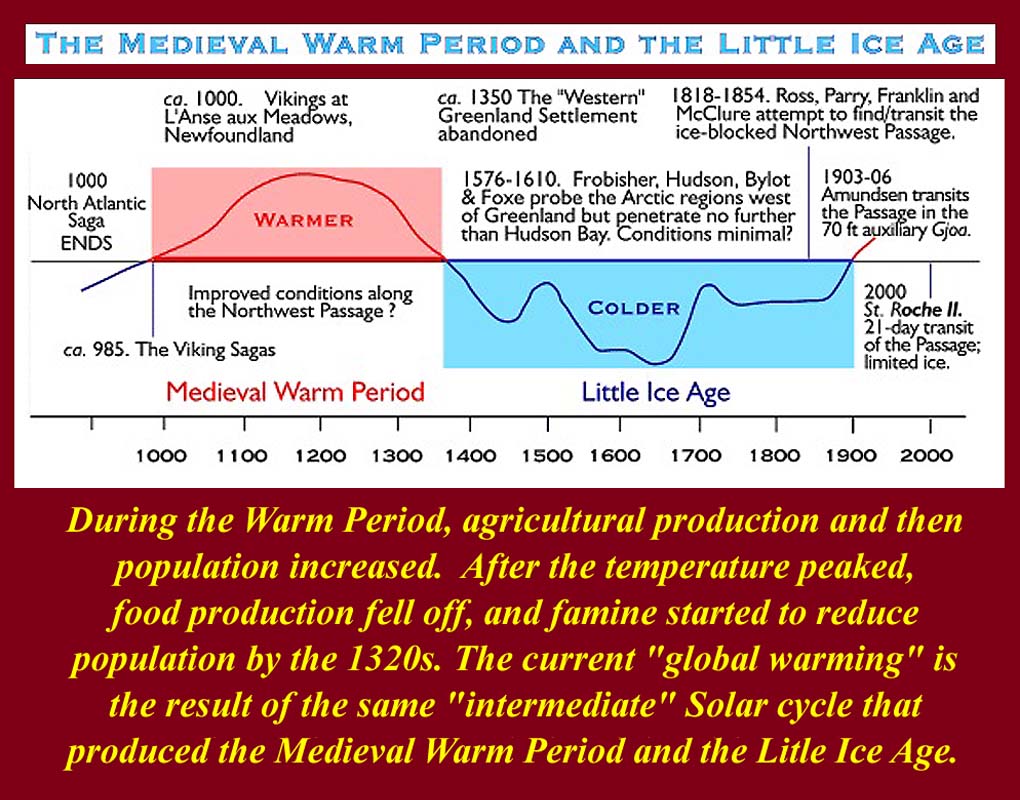
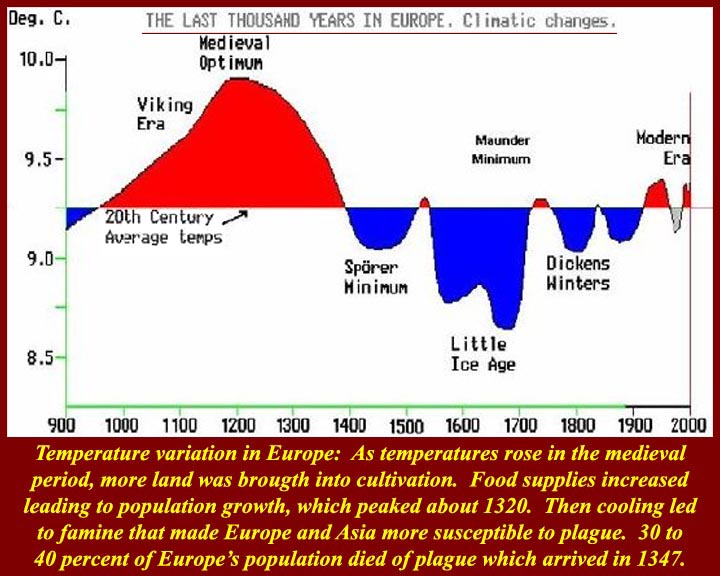
http://www.mmdtkw.org/MedRom1006aMedievalWarming.jpg
http://www.mmdtkw.org/MedRom1006bMedievalWarm.jpg
http://www.mmdtkw.org/MedRom1006cWarmPeriods.jpg
Priming the population for the plague. The population of Rome and the rest of Europe was primed for an epidemic of some kind. Famine was already prevalent due to a European, indeed world wide, climate change. Temperatures had risen starting around 800 AD and reached a peak in the 1100s. During the "Medieval Warm Period", which lasted well into the 1300s, more and more land was brought into cultivation as temperate climates moved both northward and up slope (i.e., Greenland, Iceland, Labrador, etc. and many mountain valleys that had previously been too cold to farm). Also, the growing season in Europe lengthened perhaps 20 percent. As more food became available, populations grew and prosperity increased. Prosperity and larger populations led to growth of towns and cities where population density increased.
But as the warm period wound down -- global cooling -- the larger populations were unsustainable. At first, the climate change brought heavy rains to Europe, which flooded fields and cause crop failures. Populations can last through one crop failure, but when it happens for several years, famine becomes inevitable. After the rainy years there was a period of drought years which further limited food supplies. Those who didn't starve were malnourished. Even before the plague arrived, the die-off had started in Europe, and the general population was weakened and more susceptible to disease.
Europe was primed for an epidemic.
Is global warming happening today? Yes.
Will it continue? Yes.
Is it caused by human activity? Probably some of it.
How much of it is human caused? Ten percent or so, but perhaps decisive.
Is it such a bad thing? Nobody knows.

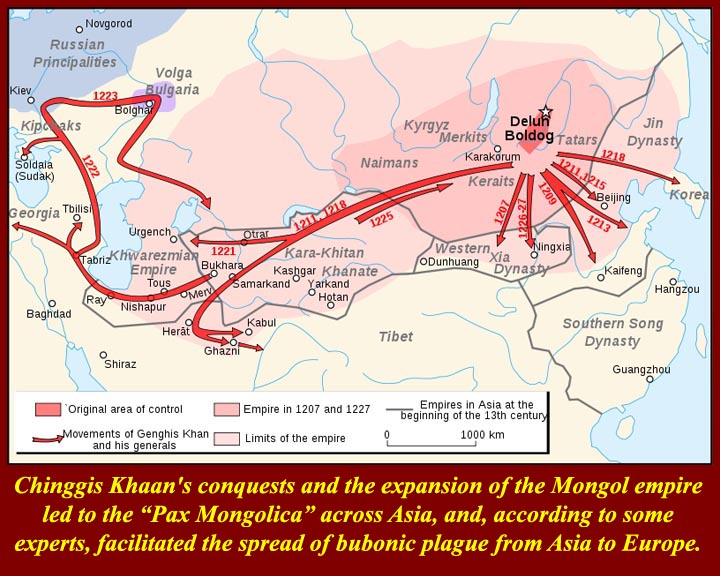
http://www.mmdtkw.org/MedRom1006d1Dschingis_Khan.JPG
http://www.mmdtkw.org/MedRom1006dMongolExpansion.jpg
http://www.mmdtkw.org/MedRom1006dxSilkRoad-Map.jpg
Blame it on Djengis Khan. The Pax Mongolica (similar, except for geography, to the European Pax Romana) was a result of conquests by Djengis and his armies. Their military marches unified territories from the Pacific Ocean to Europe and made trade and transport easy. The Silk Road was stabilized and open to travelers, goods, rats, and bugs. At the same time, global cooling, earthquakes, and a few volcanic eruptions were making Central Asia inhospitable to Asiatic rats, which theretofore had munched happily on wild seed and grain. The rats moved westward in waves following the trail of trash on the Silk Road and hitching rides whenever possible. Many theorists think they made it into Europe first through Black Sea ports and Istanbul.
Westerners tend to think of the plague as a European phenomenon. We need to note that those rats also headed into Asian cities. Before the plague ever reached Europe, Asia was already well on the way to a population implosion.
Rats are one of the hosts of a bacillus called yersina pestis. Fleas bite the rats and then bite people. Plague is spread. More about this later.

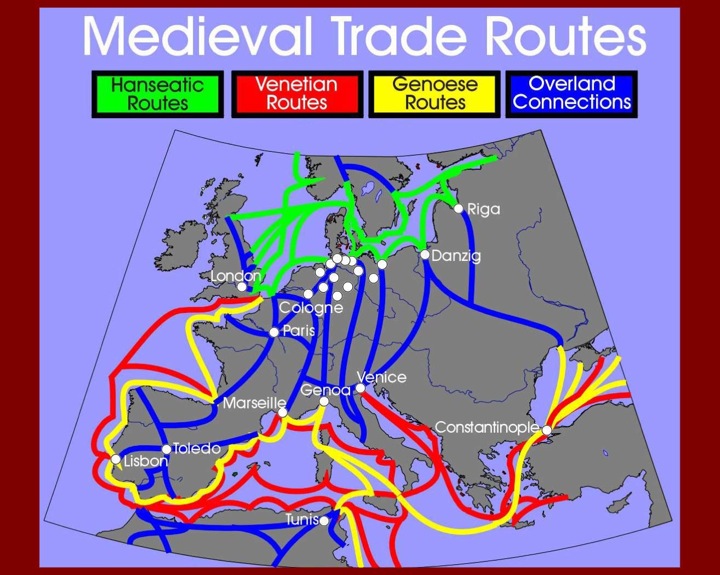
http://www.mmdtkw.org/MedRom1006ePlagueSpread1347.jpg
http://www.mmdtkw.org/MedRom1006f-TradeRoutes.jpg
http://www.mmdtkw.org/MedRom1006PlagueMap.jpg
European plague spread patterns, followed established trade routes. Entry was probably from the Crimean Black Sea ports (1346), then by ship down to Istanbul('47), then to Sicily ('47), Naples ('47), Genoa ('47), along the Italian Peninsula ('47 - '48), and up and throughout Europe over land and by sea ('48, '49, '50). A single ship or wagon or traveler could infect a country. Cities, with their own burgeoning rat and flea populations waiting to be infected, were prime targets.
Today, epidemiologists are extremely worried about the spread of disease over modern travel and trade routes. The ancient quarantine island in the Tiber River no longer has that function, nor does Ellis Island in New York. But entry inoculations and quarantines and border closings made headlines during recent SARS and Swine flu scares.
One of the largest annual population movements is the Haj (pilgrimage) to Mecca and Medina. Saudi Arabia ensures that all pilgrims are inoculated against diseases at their points of origin. The refugee crisis in Europe has also led to widespread preventative efforts.
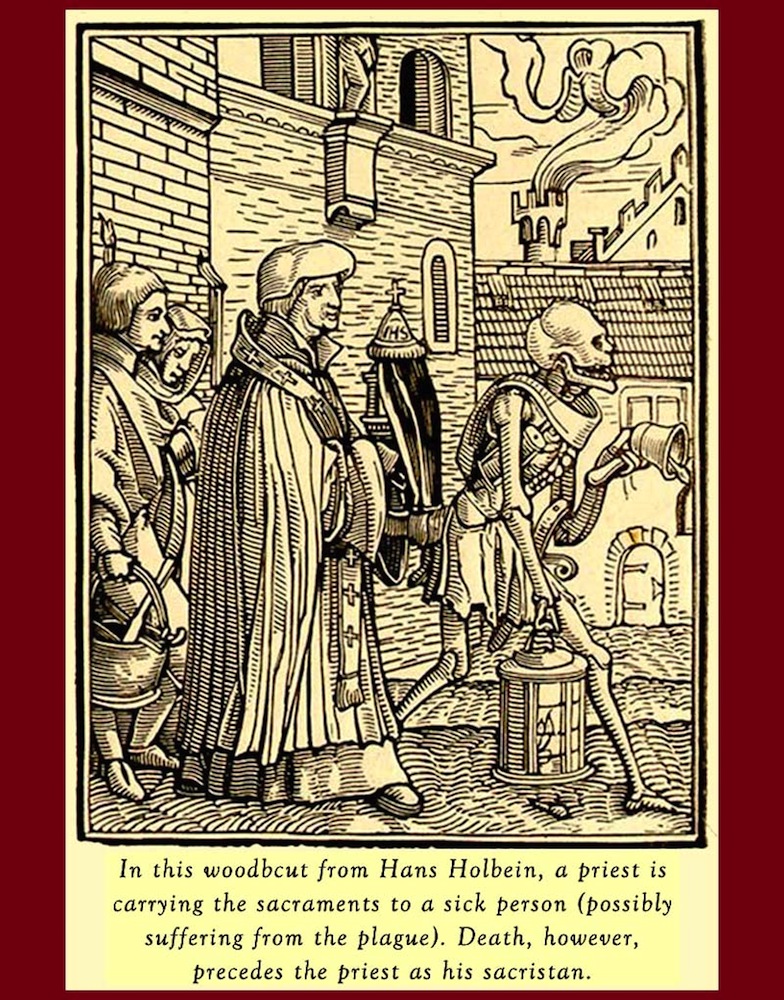
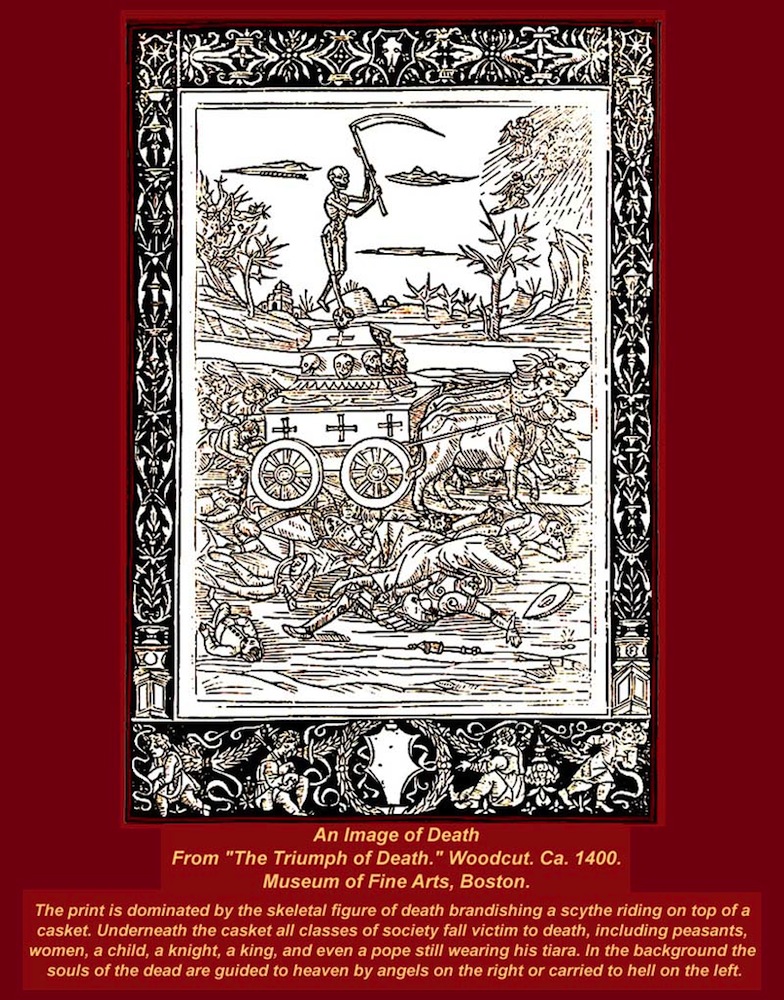
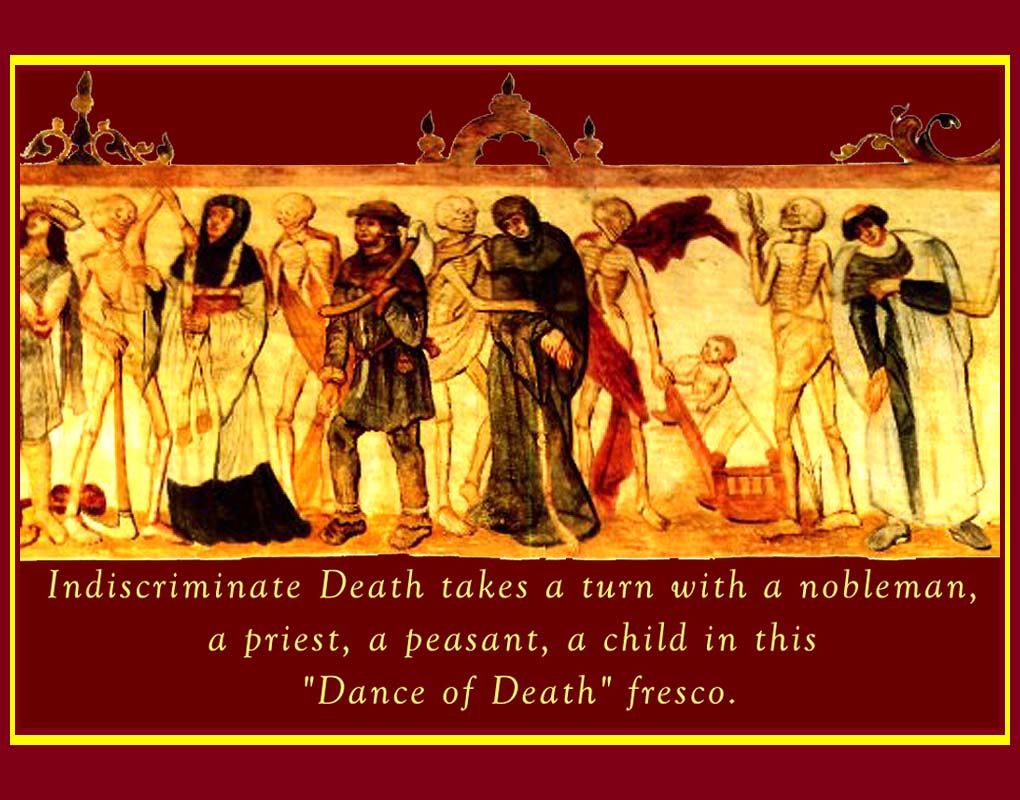
http://www.mmdtkw.org/MedRom1007LastRites.jpg
http://www.mmdtkw.org/MedRom1008HarvestDeath.jpg
http://www.mmdtkw.org/MedRom1009DeathDance.jpeg
http://www.mmdtkw.org/MedRom1009xDeathAllAges.jpg
Imagery of the plague times was stark. It was during the plague years that Death was personified as a skeletal reaper, his scythe capable of cutting down whole populations. Some plague images showed death dancing with members of all social classes and others showed death taking all ages. Even the literature of the times was plague oriented; Boccaccio's Decameron tale-tellers were all escapees from the urban death sinks.
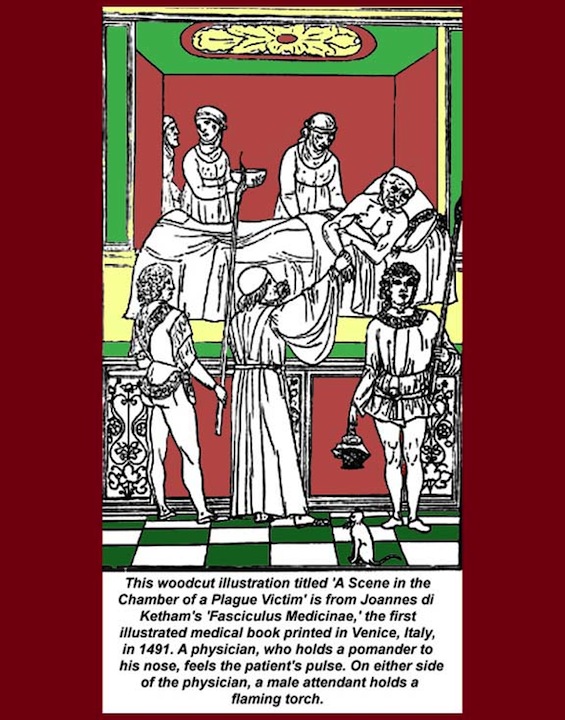
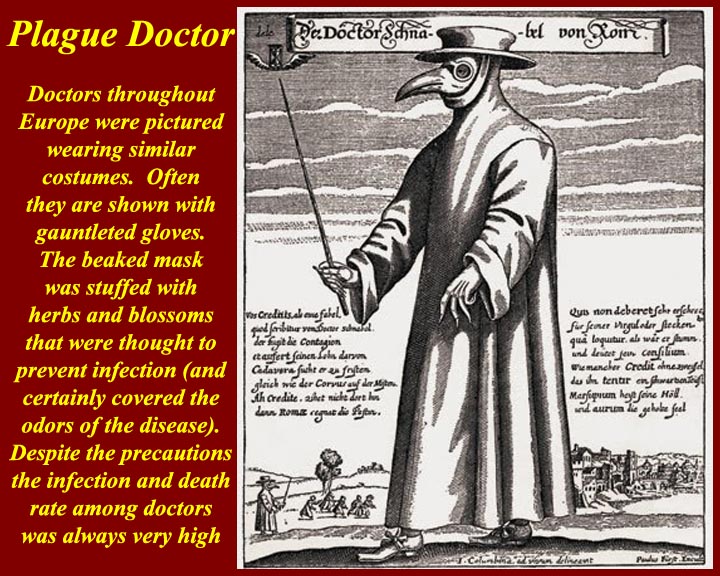
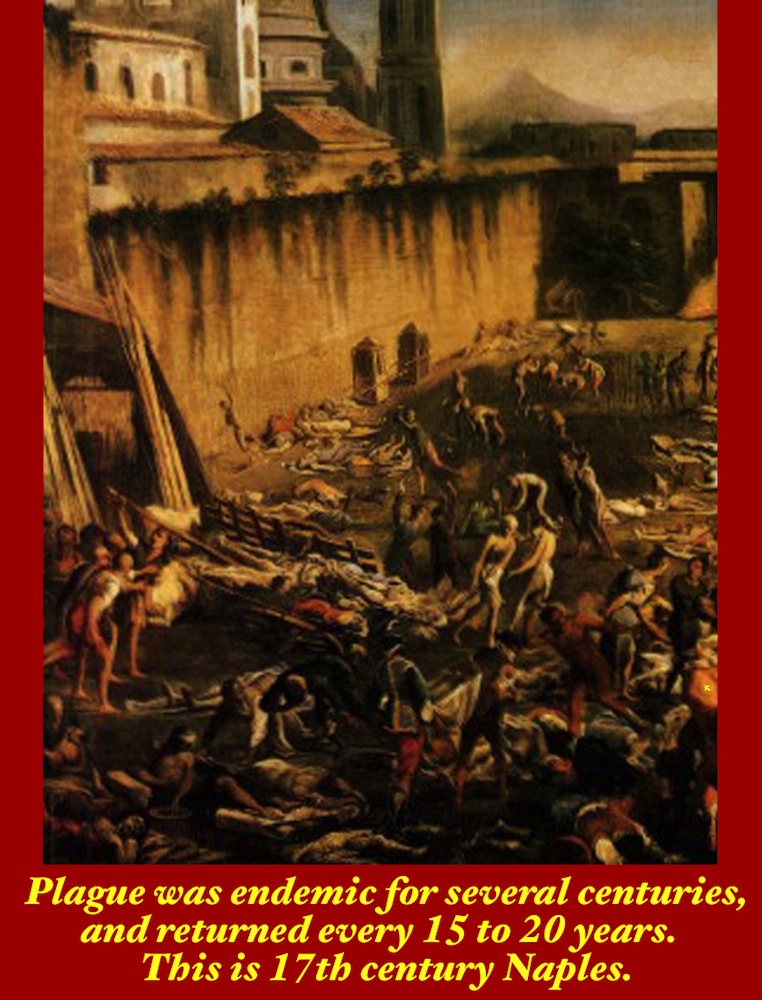
http://www.mmdtkw.org/MedRom1010PlagueChamber.jpg
http://www.mmdtkw.org/MedRom1010wPlagueDoctor.jpg
http://www.mmdtkw.org/MedRom1010xNaples17thCentury.jpeg
http://www.mmdtkw.org/MedRom1010yPeste.jpg
The great preoccupation was treating the sick and disposing of the bodies. Courageous doctors, often shown wearing the schnabel (beaked mask), did what they could, but the situation often deteriorated when there were to few of them or when the doctors themselves fell victim to the disease. In those cases, houses were sometime just boarded up with the dead and alive inside. Sometimes houses were burned to prevent the spread of contagion, but that was usually impractical in densely packed housing areas. The best protection was to flee dense populations, but that could also carry the disease to a new area.
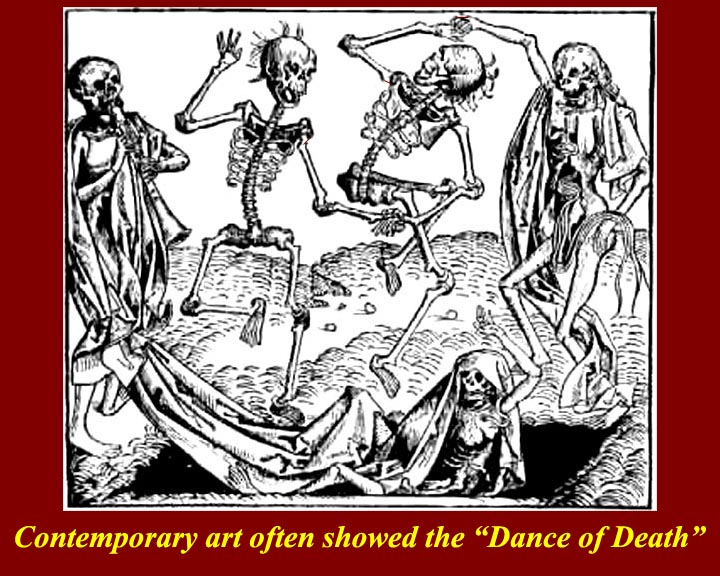
http://www.mmdtkw.org/MedRom1010z1DanceDeath.jpg
http://www.mmdtkw.org/MedRom1010z2Tarantella.jpg
Dance your troubles away.
In some areas, people appear to have thought that the plague was associated with tarantula spiders, and a dance, the tarantella, was invented to ward off the danger. Popular mythology and some dictionaries say that both the dance and the spiders got their names from the Italian port of Taranto at the upper end of the inside of the heel of the Italian boot.
http://www.mmdtkw.org/MedRom1011EuropePopulationPlague.jpg
Modern estimates -- not more than educated guesses; nobody had a hard count -- of total European population leading up to and through the plague.
http://www.mmdtkw.org/MedRom1012aYersinaPesticCyc.jpg
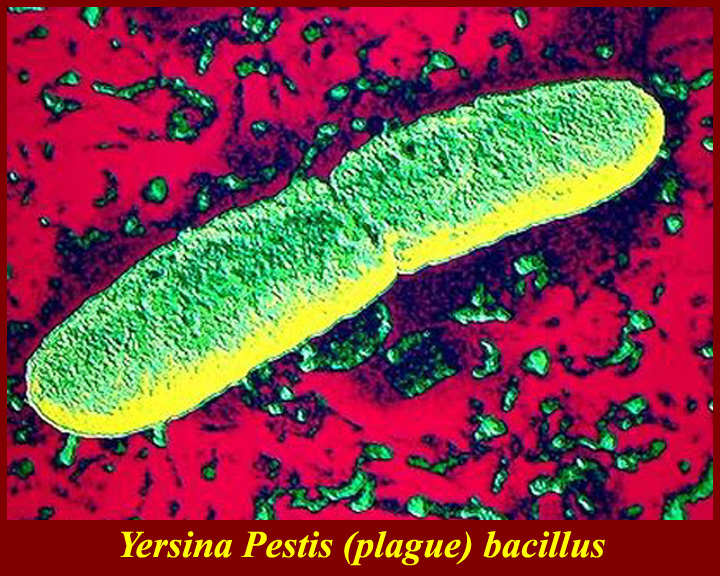
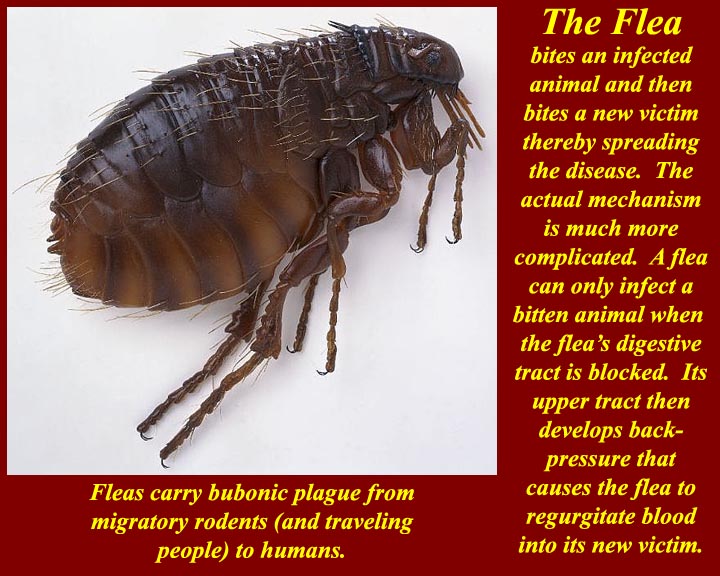
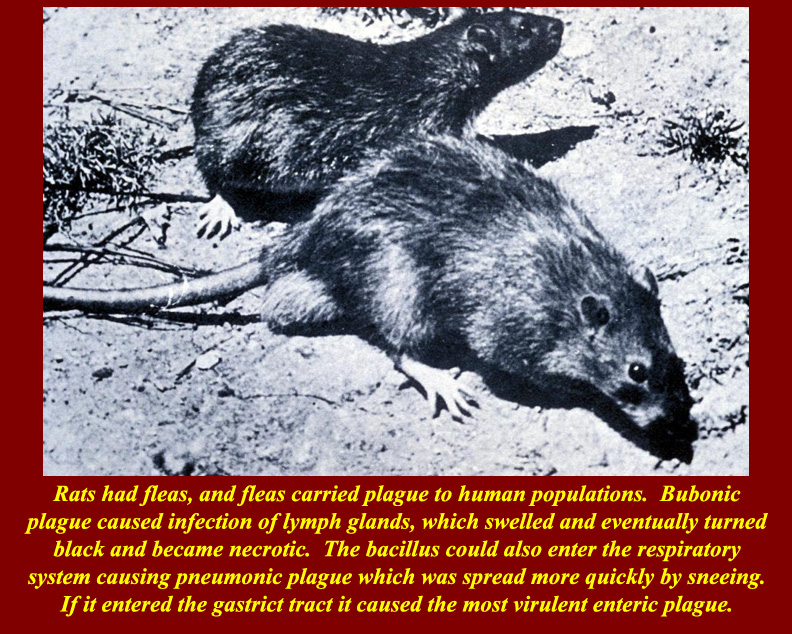
http://www.mmdtkw.org/MedRom1012Yersina.jpg
http://www.mmdtkw.org/MedRom1013Flea.jpg
http://www.mmdtkw.org/MedRom1014PlagueRats.jpg
http://www.mmdtkw.org/MedRom1015PlagueMakeup.jpg
Parts of the cycle. The diagram is self explanatory and shows the ways the disease can enter human populations. Wild rodent populations can be immune to the disease either because they carry antibodies or because the co-evolved with the bacillus. In order for a flea to transmit the bacillus to a new host effectively, it also has to have gut-blocking indigestion that causes it to regurgitate fluids into the bite after it feeds (which is pretty gross). The bubonic form of the yersina pestis infection is the kind caused by the flea bite. Once a human or human-associated animal population is infected, the disease can be passes more efficiently by inhalation of aerosols (from sneezing or coughing) or by ingestion of disease-contaminated substances.
WASH YOUR HANDS! -- DON'T EAT CARRION! -- PURIFY YOUR WATER!
Both the pneumonic and enteric kinds of plague killed a lot faster than did the bubonic form. In places where groups of people slept together -- university and monastery dormitories -- everyone could be infected and die overnight.
After the first sweep of plague through Europe, the survivors had received a measure of immunity. The next wave in 1361 took out mostly young people, who had not been alive and therefore were not exposed in the 1347-50 epidemic. It was therefore called the "Children's Plague". It hit England hardest. Recurrent disease epidemics often hit decimated children. That's also why "Swine flu" epidemic worries centered around younger people; the swine flu bug seems to be similar to the "Asiatic flu" of the 1950s, to which most older Americans were exposed and for which they carried antibodies. Similarly, persons who survived the 1918 flu epidemic were less likely to catch the Asiatic flu of the 1950s.
An anti-plague serum was developed in 1894 by Swiss bacteriologist Alexandre Yersin, after whom the plague bacillus was named. Modern antibiotics can cure plague if it is diagnosed early.
See http://en.wikipedia.org/wiki/Bubonic_plague
and https://www.cdc.gov/plague/index.html

